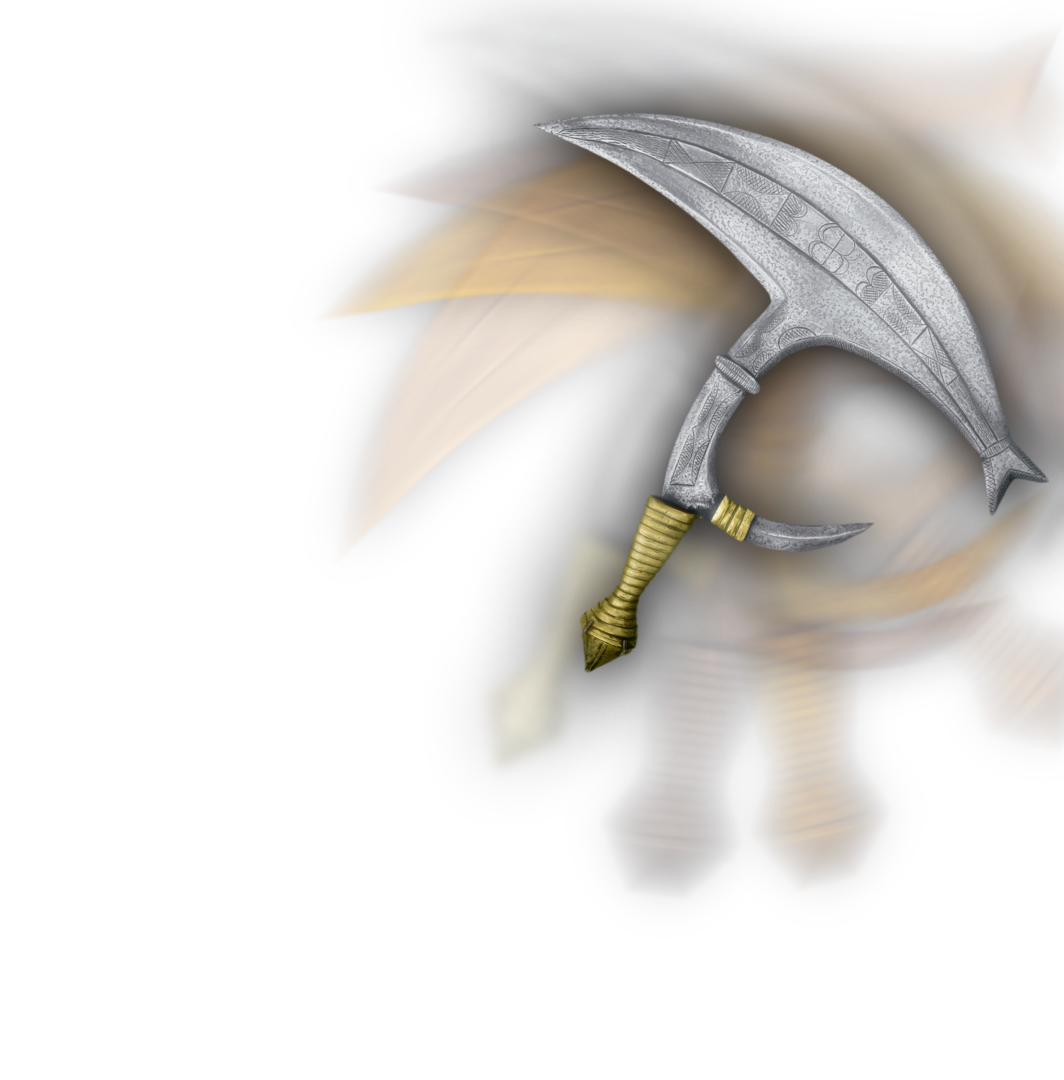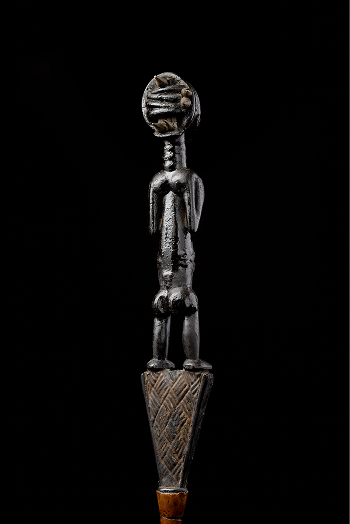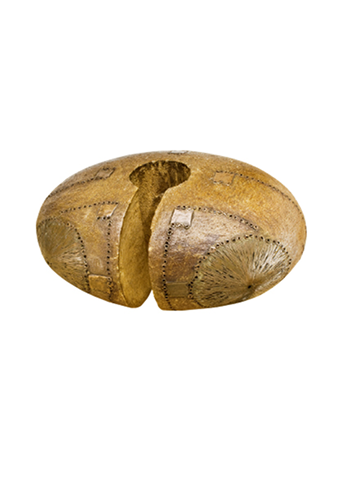
Weapons—Social and Symbolic Action
Pre-colonial Central Africa presented a complex tableau of societies. Warfare was a major feature across large parts of Central Africa, leading to the militarisation of society and the development of unique martial practices and cultures.
Across West Central Africa, the contest for domination among the rival states of the Kongo Kingdom, Ndongo, and Matamba, as well as against Portuguese and Imbangala invasions, ultimately gave rise to a unique martial culture already by the 17th century. In ‘Zandeland’, spanning much of the sub-Saharan grassland in the northernmost part of Central Africa, the steady expansion of the Zande in the 18th and 19th centuries brought uniformity to the weaponry, military organisation, tactics, and martial culture in this region as a whole. Similar ‘state-building’ processes took place elsewhere in Central Africa, including in areas occupied by the Kuba and Luba peoples, who imposed a new social and political order on earlier tribal social organisations.
The bewildering range of weapons reflects the diverse societies then existing in Central Africa, as well as their divergent lifestyles. Hunter-gatherers living in the tropical forest favoured bows and arrows as well as large spears wielded with two hands—used for hunting large animals and in hand-to-hand combat—whereas agrarian groups adapted the tools for farming, carving, and tool-making to combat, which in time spawned unique forms. Further to the east, herders in the open savannah wielded clubs to protect their cattle and long lances to fend off and hunt large predators. These same weapons were used for combat and war.
Last but not least, an abiding feature of Central African arms is individuality—craftsmen infused a high degree of personality into their design and craftsmanship, making each well-made battle axe, throwing knife, sword, dagger, spear or shield a unique artwork.
Across West Central Africa, the contest for domination among the rival states of the Kongo Kingdom, Ndongo, and Matamba, as well as against Portuguese and Imbangala invasions, ultimately gave rise to a unique martial culture already by the 17th century. In ‘Zandeland’, spanning much of the sub-Saharan grassland in the northernmost part of Central Africa, the steady expansion of the Zande in the 18th and 19th centuries brought uniformity to the weaponry, military organisation, tactics, and martial culture in this region as a whole. Similar ‘state-building’ processes took place elsewhere in Central Africa, including in areas occupied by the Kuba and Luba peoples, who imposed a new social and political order on earlier tribal social organisations.
The bewildering range of weapons reflects the diverse societies then existing in Central Africa, as well as their divergent lifestyles. Hunter-gatherers living in the tropical forest favoured bows and arrows as well as large spears wielded with two hands—used for hunting large animals and in hand-to-hand combat—whereas agrarian groups adapted the tools for farming, carving, and tool-making to combat, which in time spawned unique forms. Further to the east, herders in the open savannah wielded clubs to protect their cattle and long lances to fend off and hunt large predators. These same weapons were used for combat and war.
Last but not least, an abiding feature of Central African arms is individuality—craftsmen infused a high degree of personality into their design and craftsmanship, making each well-made battle axe, throwing knife, sword, dagger, spear or shield a unique artwork.

Dignitary Cane
Wood
Luba, Luba Kingdom and its neighbours
Mid-20th century
Luba, Luba Kingdom and its neighbours
Mid-20th century

Sickle Knife
Brass, iron, wood
Ngombe/Doko/Iboko/Mongo Western, Deep Central Africa
1880-1900
Ngombe/Doko/Iboko/Mongo Western, Deep Central Africa
1880-1900

Arm Guard
Wood
Tutsi, Great Lakes Region
E1900-1920
Tutsi, Great Lakes Region
E1900-1920